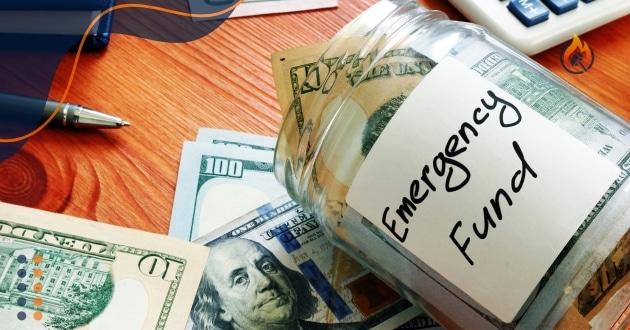Emergency fund building techniques are crucial for anyone seeking financial security in today’s unpredictable world. Life can throw unexpected challenges our way, and without a safety net, those challenges can lead to significant stress and financial hardship.
Whether it’s a sudden medical emergency, a job loss, a home repair, or an unexpected travel expense, having a well-established emergency fund can mean the difference between navigating through tough times with ease or sinking deeper into debt.
It serves as a financial cushion, offering you peace of mind and the ability to weather life’s uncertainties without resorting to high-interest loans or credit card debt. Even though it might seem daunting at first, establishing an emergency fund is one of the most empowering financial decisions you can make.
Why You Need an Emergency Fund
An emergency fund is essential for financial stability, offering protection against unexpected events such as medical emergencies, job loss, or urgent home repairs. Without this safety net, individuals may be forced to rely on loans or credit cards, leading to high-interest debt. By setting aside funds for emergencies, you ensure that you can handle life’s uncertainties without unnecessary stress.
Having an emergency fund provides peace of mind and allows for better decision-making. With a financial cushion in place, you can take time off work for personal reasons or leave a toxic job without the fear of falling behind on bills. It gives you the flexibility to make choices that are aligned with your values, rather than being constrained by immediate financial pressures.
Additionally, an emergency fund indirectly supports other financial goals, such as improving your credit score. How to Improve Credit Score Canada is a common concern, and having an emergency fund can help maintain timely payments and low credit card balances, which are crucial for a strong credit history. Ultimately, building an emergency fund not only safeguards against immediate crises but also lays the foundation for long-term financial health.
How Much Should You Save?
Before diving into the actual emergency fund building techniques, it’s important to determine how much you need. Start by calculating your essential monthly expenses. These should include:

- Rent or mortgage
- Utilities
- Groceries
- Insurance premiums
- Transportation costs
- Minimum debt payments
Once you have this figure, multiply it by three to six to establish your target goal. For example, if your essential expenses total $2,000 per month, aim for $6,000 to $12,000 in your emergency fund.
Step-by-Step Emergency Fund Building Techniques
Now that we’ve established the importance and goal of an emergency fund, let’s explore practical emergency fund building techniques that can help you reach your target efficiently and sustainably.
- Start Small and Stay Consistent: To begin with, saving even $10 a week can set the foundation for a solid emergency fund. While the goal might seem overwhelming at first, breaking it down into manageable chunks makes it achievable. As your income grows or expenses decrease, you can gradually increase your contributions.
- Automate Your Savings: One of the most effective emergency fund building techniques is automation. Set up a direct deposit from your paycheck or bank account to a separate savings account designated solely for emergencies. By doing so, you eliminate the temptation to spend the money and ensure consistent contributions.Automation transforms saving from a conscious effort to a passive habit.
- Cut Non-Essential Expenses: Another powerful technique is to review your monthly spending and identify areas where you can cut back. This might involve canceling unused subscriptions, cooking at home more often, or opting for a less expensive phone plan. The money you save should be directed straight into your emergency fund.
- Set Short-Term Milestones: Rather than focusing solely on the final goal, break it down into smaller milestones. For instance, aim for your first $500, then $1,000, and so on. Each milestone achieved provides a sense of accomplishment, boosting motivation and momentum.
Common Mistakes to Avoid
While applying various emergency fund building techniques, steer clear of these common pitfalls:
- Using the fund for non-emergencies: A sale at your favorite store or a last-minute vacation does not count as an emergency.
- Keeping it too accessible: Avoid linking your emergency fund to your debit card or main checking account.
- Failing to replenish it: If you use your emergency fund, make it a priority to rebuild it as soon as possible.
Emergency Fund vs. Other Savings Goals
Some people confuse an emergency fund with other types of savings, such as those for vacations or a down payment on a house. However, the purpose of your emergency fund is to be available immediately, without conditions, during true emergencies.
Consequently, it should be treated as a separate and essential part of your financial planning, non-negotiable and off-limits unless a genuine crisis arises.
Building an Emergency Fund While in Debt
A common question is whether you should focus on saving or paying off debt. Ideally, do both simultaneously. Begin by saving at least a small emergency fund, around $1,000, to avoid accruing more debt during emergencies. Then, focus on debt repayment while maintaining minimal contributions to your emergency fund.
Once your debt is under control, you can ramp up your savings aggressively.
Conclusion
In conclusion, establishing a robust emergency fund is one of the most important steps you can take toward achieving financial security and peace of mind. The techniques we’ve discussed, starting small, automating your savings, cutting non-essential expenses, and increasing your income, are all practical strategies that, when combined, can help you build a substantial safety net over time.
By being proactive about your savings and setting clear, achievable goals, you can ensure that you are financially prepared for life’s unexpected challenges. An emergency fund not only offers immediate relief during financial crises but also empowers you to make informed and confident decisions about your future.
Whether it’s the ability to take time off from work, make an important career change, or simply weather a personal or financial storm, your emergency fund provides a sense of security that reduces stress and increases your overall well-being.
Moreover, it serves as the foundation for other savings goals, including retirement, homeownership, and education, all of which contribute to long-term financial health.
Remember, building an emergency fund is not a one-time task, but an ongoing process. As your financial situation changes, so should the amount you save. It’s essential to review your fund regularly and adjust your savings strategy to meet your evolving needs.
By prioritizing the creation of an emergency fund now, you are laying the groundwork for a more secure, stable, and prosperous future. For further guidance on financial planning and saving strategies, you can visit Government of Canada – Financial Consumer Agency, which offers a wealth of resources and advice to help you manage your finances effectively.


